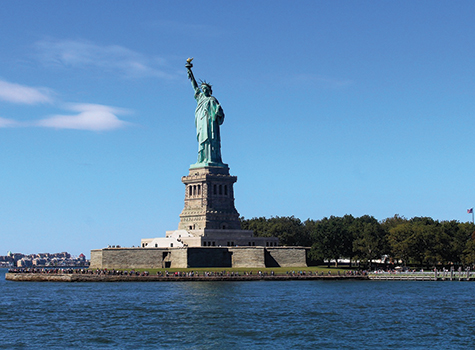
As has been written about ad nauseum, President Trump has ballyhooed an intention to remake the United States’ immigration system with a focus on tightening up US borders and deporting millions of individuals currently in the United States. He likely intends to achieve many of these aims through executive orders and moving the levers of government that he controls, namely the US Departments of Homeland Security and Justice.
Within DHS are three important agencies – Customs and Border Protection (CBP), Immigration and Customs Enforcement (ICE), and US Citizenship and Immigration Services (USCIS). Each of these agencies has a specific purpose: CBP oversees the admission and departure of individuals to/from the United States; ICE enforces immigration law in the nation’s interior and oversees litigation before the Immigration Courts; USCIS adjudicates visa, naturalization and other filings for the grant of immigration benefits.
While Congress holds the real power in terms of crafting new legislation that would overhaul the current Immigration and Nationality Act, Trump’s use of his executive authority is likely to garner the most immediate attention and action.
The use of executive orders is his most immediate avenue of enacting an imprint on the current immigration system. But what is an Executive Order? “Executive Orders (EOs) are official documents … through which the President of the United States manages the operations of the Federal Government.†Remember the President is the head of the executive branch of government, which encompasses most of the federal agencies that the public relies upon, ranging from the US military, the Internal Revenue Service, the National Parks Service and the Environmental Protection Agency.
In short, Trump can direct any of these agencies to undertake any particular action, provided that such directives cite to the President’s authority under the Constitution and statute (sometimes specified). EOs may be revoked by the President at any time, and many expect Trump to revoke many of the EOs passed by President Biden. Given that Congress often acts very slowly and with much deliberation, Executive Orders can be used by Presidents to pursue specific policy aims or programs without Congressional approval.
The Trump camp has promised to deliver a blizzard of EOs to help shape his immigration agenda. This can include surging resources to the Southern US border, blocking the issuance of visas for given countries and altering the paperwork requirements for specific benefits. During the first Trump administration, DHS required green card applicants to submit reams of evidence that they would not become reliant upon the government once their green cards were issued, which often required hundreds of pages of financial documents and complicated immigration forms.
Doing so resulted in a larger administrative burden, as processing times slowed due to the volume of this new paperwork requirement. Similarly, Trump’s famed “Muslim Ban†slowed travel for individuals coming from specified foreign countries. In short, he will likely try to enact a range of immigration-related EOs to help deliver on his promise of a tougher immigration system.
However, like most other government actions, EOs are subject to federal litigation and lawyers will likely line up to challenge the propriety of Trump’s actions in federal court. As mentioned above, EOs are still bound by the Constitution and statute and EOs cannot supersede the authorities granted to the President by Congress.
A hallmark of Trump’s first administration was to test the limits of Presidential power, and his second term will likely try to push the boundaries even further. Whether this is a good or bad outcome remains to be seen, but by the time this article is published, we will likely have our first taste of what is to come over the next four years.
Rishi P. Oza is Partner at Brown Immigration Law, a firm that focuses solely on immigration law; he practices in Durham. Contact: [email protected]



